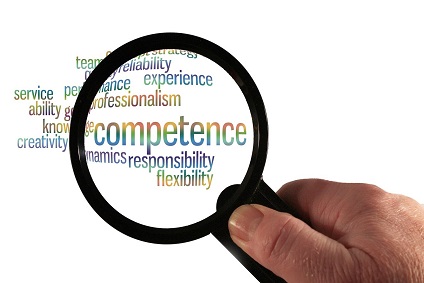
Blogs List

How Much Do We Benefit from Corporate Competency Libraries?

I am always asking myself questions about HR management and some of the things that we live by naturally start to bother me in different ways. One of these is corporate competency libraries which is the main subject of this article.
- Where, how and for what purpose are we using them?
- How successful are organizations in creating corporate competency libraries that really reflect the roles carried out in the organization?
- Do we really map all behavioral indicators to organizational positions/roles properly, set up workable appraisal systems and train our appraisers on how to score the competencies at each level accordingly?
- Can we really keep the library updated based on the changing needs and conditions?
- Does it make sense, or are we just doing it for the sake of saying to others that we have it?
- Do we regularly measure the impact of what we have put into operation and take precautions to improve what we have?
But, first, to be able to answer these questions properly, let’s discuss what competencies are and how a proper competency library should (or should not) be designed and put into use. Despite earlier confusion about the definition of competency, now a great majority agrees upon the following definition:
“Competency is the set of knowledge, skills and personality traits to do a job efficiently and effectively.”
But, most of us also know that:
- There are many tests measuring knowledge depending on the types or categories of knowledge. We are already benefiting from one or more of these tests in our daily professional lives.
- Many skills or skill sets are measured with specific performance/achievement tests. Virtualization and gaming technology is quickly gaining ground in this area.
- There are many accredited psychometric and cognitive tests to measure many aspects of psychological and cognitive traits. Many mechanical and digital games have been in use for this purpose for some time now.
- The commonly used “5 personality traits” or “16 personality factors” based on personality inventories are used to describe behavioral aspects in general. There are also tests designed to measure the fit for a specific personality type expected to increase efficiency and effectiveness for specific occupational areas.
“Competency-based Employee Appraisal” is, in fact, based on measuring a certain set of observable behaviors that is normally an outcome of the combination of these three factors. It should be noted here that, this method produces much more reliable results if the appraisal is made by trained and experienced appraisers. Therefore, if the managers in the organization are appraising their subordinates, you cannot be sure about the quality or consistency of the appraisals.
Let’s now see which HR processes these different appraisal types are used and for what purpose:
- To filter or order candidates in a recruitment process based on fitness for a certain position in the organization.
- To measure how much employees are fit for their current positions in an employee assessment process.
- To identify employees that need improvement in certain competencies required by their current positions and design training programs in employee development and training process.
- To measure employees’ fit for potential positions, design development programs, create career pools and select candidates for those pools in career management process.
- For those that have not yet started their professional lives, determine the career paths that they will potentially be most successful in talent network management process.
As you can see, some of these implementations are reactive, while some are proactive in nature. Organizations decide to implement some or all of these appraisal methods according to their cultural preferences and business needs. Since there are so many combinations of using these methods in many HR processes, organizations decide about one implementation and change it as they see a need for a change.
At this point, I cannot take the following question out of my mind:
“We know that competency is the set of knowledge, skills and personality traits to do a job efficiently and effectively. We also know that these three factors can be measured separately with scientifically accepted testing methods and reliable results can be achieved. Then, why are we creating another system by trying to figure out observable behavior sets resembling the degrees of these factors and using this less reliable system by asking managers to evaluate their subordinates (or supervisors and/or colleagues in case of 360 degree appraisals) based on their observations of these behaviors for which there is no existing generally accepted standard approach?”
In our company BILIN’s end-to-end HCM software, called HUMANIST, we developed these modules in such a way that our customers are free to choose whichever method they would like to use for different parts of their organizations. Reviewing the trends in usage preferences during the last 30 years, we have observed the following common approach:
- External tests and certain personality inventories are mostly preferred over competency based appraisals in recruitment processes or planning career paths for new graduates in talent network management processes.
- Organizations that have detailed competency mappings for the positions to be filled, also use competency based appraisals in their interview sessions.
- Observational competency based appraisals are mostly used as part of internal performance appraisals and career management processes (which is still a rare implementation in most of the organizations).
Unfortunately, this is a blog article, not a book. So, with brevity in mind, it seems to me that the following are the basic reasons behind this common approach:
- If you do not have the opportunity or enough time to observe the person (employee or candidate) beforehand, then you have to base your appraisals on solid measurements provided by standard tools to evaluate the underlying factors of competencies.
- If you need the line managers or other employees who may or may not have enough experience to do professional assessments and the cost and/or complexity of using professional assessors hinders that option, then asking the appraisers (who are generally the line managers) to observe behaviors of the appraisees and score competencies based on these related behaviors becomes another option. (This option started to be less preferred by organizations who believe such observations do not lead to reliable and organization-wide comparable results).
- It is really a difficult, tedious and costly task to identify detailed knowledge, skill and cognitive ability requirements for each position in an organization and keep it updated. Further, such a study requires long term surveys and research based on psychology and social sciences expertise. However, it is practical, easier to maintain and less costly to set up a corporate competency library by getting help from consultant companies who adhere to the tenets of generally accepted competency libraries and can customize them to your organizational needs.
All in all, although I was exposed to higher education in management and organization, my basic professional education is computer engineering. This background makes me biased towards more stable, objective and validated mathematical measurement approaches evaluating each of the three factors comprising competencies separately. However, I also have 30 years of experience in implementing such systems in large enterprises, and this experience makes me accept the fact that competency-based appraisal is indeed an option for certain cases. So, if you are going to use the competency-based appraisal in your performance management system, then please read the following advice based on my observations through years of implementations that proved to be right or wrong in certain instances:
- DO NOT start to build a corporate competency library UNLESS you are sure that you have a well-documented and updated organization structure that resembles the mission and vision of your organization with no gaps, overlaps, or conflicts.
- DO NOT try to build up a corporate competency library by combining parts of many irrelevant competency lists that you gathered from different sources.
- BE SURE that you work with the right consultants for this task.
- BE SURE that these consultants are knowledgeable and experienced about your organization’s work area and do not let them just inject template competency sets into your system without customizing them to your organizational needs, which also needs a lot of input from your line managers and HR department.
- BE SURE that the behavioral indicators to be used in the competencies’ evaluation are easy to understand and easily and objectively measurable.
- Get help from professional assessors when necessary to set up evaluation methods for behavioral indicators.
- Have all your appraisers trained on these evaluation methods.
- DO NOT underestimate the small differences between the behavioral indicators used to evaluate a competency for different positions/job titles. DO NOT try to make the distinction between job ranks with “expected scores.” This will take you down a wrong path.
One last thing to remember is that there should be only one common competency library mapped to the positions, roles or job families in the organization and that library should be used in all of the related HR processes. I have witnessed organizations using totally different competency sets for recruitment, training, performance management and career management processes, and that did not go well. One of the keys to a successful strategic HR management is integrated and consistent HR policies and procedures.



